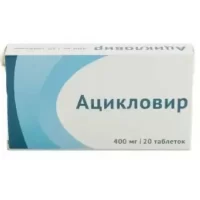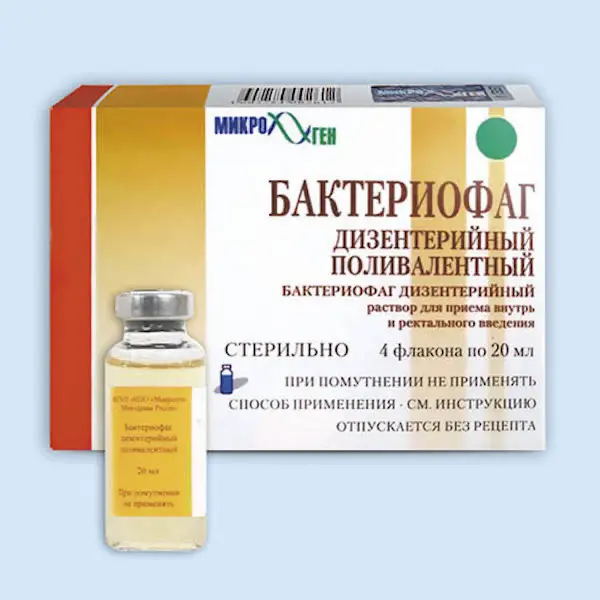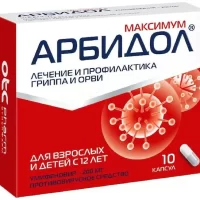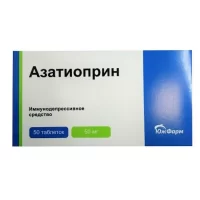Description
Reafferon-ES Pharmacodynamics
The drug has antiviral, antitumor and immunomodulatory activity.
Recombinant human interferon alfa-2b, which is the active ingredient of the drug, is synthesized by the bacterial cells of Escherichia coli strain SG-20050/pIF 16, which have the gene of human interferon alfa-2b built into their genetic apparatus. It is a protein containing 165 amino acids and is identical in its characteristics and properties to human leukocyte interferon alpha-2b.
The antiviral effect of interferon alfa-2b is manifested during the period of virus reproduction by its active incorporation into the metabolic processes of cells. Interferon interacting with specific receptors on cell surface initiates a number of intracellular changes, including the synthesis of specific cytokines and enzymes (2-5-adenylate synthetase and protein kinase), the action of which inhibits the formation of viral protein and viral ribonucleic acid in the cell. Immunomodulatory action of interferon alfa-2b is manifested as an increase of phagocytic activity of macrophages, an increase of specific cytotoxic action of lymphocytes on the target cells, changes in the quantitative and qualitative composition of secreted cytokines, changes in the functional activity of immunocompetent cells, changes in the production and secretion of intracellular proteins. Antitumor action of the drug is realized by suppressing proliferation of tumor cells and synthesis of some oncogenes, resulting in inhibition of tumor growth.
Indications
In the treatment of adults:
– in acute viral hepatitis B – moderate and severe forms at the beginning of the jaundice period until the 5th day of jaundice (in later terms the drug administration is less effective; the drug is not effective in developing hepatic coma and cholestatic course of the disease);
– in acute prolonged hepatitis B and C, chronic active hepatitis B and C, chronic hepatitis B with delta agent, without signs of cirrhosis, and in case of signs of cirrhosis
– in stage IV renal cancer, hairy cell leukemia, malignant skin lymphomas (mycosis fungoides, primary reticulosis, reticulosarcomatosis), Kaposi sarcoma, basal cell and flat cell skin cancers, keratoacantoma, chronic myeloleukemia, histiocytosis from Langerhans cells, subleukemic myelosis, essential thrombocythemia;
– in viral conjunctivitis, keratoconjunctivitis, keratitis, keratoiridocyclitis, keratouveitis;
– In complex therapy in children from 1 year old:
– In acute lymphoblastic leukemia during the period of remission after the end of induction chemotherapy (in 4-5 months of remission);
– In respiratory papillomatosis of the larynx, starting from the next day after removal of papillomas.
Contraindications
Hypersensitivity to the drug components;
Severe forms of allergic diseases;
Severe diseases of the cardiovascular system – heart failure in decompensation stage, recently suffered myocardial infarction, marked heart rhythm disturbances;
Severe renal and/or hepatic insufficiency, including that caused by the presence of metastases, chronic hepatitis with decompensated liver cirrhosis, autoimmune hepatitis;
Epilepsy and other CNS dysfunctions, mental diseases and disorders in children and adolescents;
Autoimmune disease in the anamnesis;
Use of immunosuppressants after transplantation;
Thyroid disease that cannot be controlled by conventional therapeutic methods;
Creatinine clearance below 50 ml/min (when administered in combination with ribavirin), when used in combination with ribavirin, the contraindications stated in the instructions for the use of ribavirin should also be considered;
Use in men whose partners are pregnant; Pregnancy and breastfeeding.
Directions for use and dosages
- The drug is administered intramuscularly, subcutaneously, in or under the lesion, subconjunctivally and locally. Immediately before application the contents of the ampoule or vial should be dissolved in water for injection or 0.9% sodium chlodir solution (1 ml for intramuscular or subcutaneous injection and injection into the focus; 5 ml for subconjunctival and local injection). The drug solution shall be colorless, transparent or slightly opalescent, without sediment and foreign inclusions. Dissolution time should be about 3 min.
- Intramuscular and subcutaneous administration
In acute viral hepatitis B the preparation is administered 1 million ME twice a day during 5-6 days, then the dose is reduced to 1 million ME per day and administered during another 5 days. If necessary (after controlling blood biochemical tests) the treatment course can be continued in 1 million ME twice a week for two weeks. The course dose is 15-21 million ME. - In acute prolonged and chronic viral hepatitis B when delta agent is excluded and without signs of liver cirrhosis, the drug is administered 1 million ME twice a week during 1-2 months. If there is no effect, the treatment should be prolonged up to 3-6 months or after 1-2 months of treatment, 2-3 similar courses with an interval of 1-6 months should be carried out.
- In chronic viral hepatitis B with delta agent without signs of cirrhosis the drug is administered 500 thousand -1 million ME twice a day 2 times a week during 1 month. The course of treatment is repeated in 1-6 months.
In chronic viral hepatitis B with delta agent and signs of cirrhosis the drug is administered for 250-500 thousand ME daily two times a week for 1 month. If there are signs of decompensation, similar repeated courses with intervals of at least 2 months are carried out. - In acute prolonged and chronic active hepatitis C without signs of cirrhosis the drug is given 3 mln ME 3 times a week during 6-8 months. If there is no effect, treatment should be prolonged up to 12 months. The course of treatment is repeated in 3-6 months.
In case of kidney cancer the drug is administered 3 million ME daily for 10 days. Repeated courses of treatment (3-9 and more) are carried out at intervals of 3 weeks. The total amount of drug is from 120 million ME to 300 million ME or more. - In cases of hairy cell leukemia, the drug is administered daily 3-6 million ME for 2 months. After normalization of clinical blood test, daily dose is decreased to 1-2 million ME. Then maintenance therapy of 3 mln ME twice a week for 6-7 weeks is prescribed. The total amount of the drug is 420-600 million ME or more.
- In children with acute lymphoblastic leukemia in the remission period after termination of induction chemotherapy (in the 4th-5th month of remission) – 1 million ME once a week for 6 months, then once every 2 weeks during 24 months. At the same time, maintenance chemotherapy is carried out.
- In malignant lymphoma and Kaposi sarcoma, the drug is administered 3 million ME daily for 10 days in combination with cytostatics (prospidia chloride, cyclophosphamide) and glucocorticosteroids. In the tumor stage of fungal mycosis, primary reticulosis and reticulosarcomatosis, it is advisable to alternate between intramuscular administration of the drug at 3 million ME and intradermal – 2 million ME for 10 days.
- In patients with erythrodermic stage of fungal mycosis with fever over 39 °c and in case of process exacerbation, the drug administration should be stopped. If the therapeutic effect is insufficient, another course of treatment shall be prescribed in 10-14 days. After achieving the clinical effect, maintenance therapy of 3 million ME once a week for 6-7 weeks is prescribed.
- In chronic myeloleukemia the drug is administered 3 million ME daily or 6 million ME every other day. Duration of treatment is from 10 weeks to 6 months.
- In Langerhans cell histiocytosis the drug is administered 3 million ME daily for 1 month. Repeated courses at 1-2 month intervals for 1 to 3 years.
In subleukemic myelosis and essential thrombocythemia for correction of hyperthrombocytosis – 1 million ME daily or every other day for 20 days. - In respiratory papillomatosis of the larynx the drug is administered in 100-150,000 ME per kg body weight daily for 45-50 days, and then in the same dosage three times a week for 1 month. The second and third course are carried out with an interval of 2-6 months. In patients with high pyrogenic reaction (39 ° C and above) to the drug administration it is recommended to use paracetamol or indomethacin simultaneously.
Perifocal administration. - In cases of basal cell carcinoma, squamous cell carcinoma, keratoacantoma the drug is administered under the lesion site 1 million ME once daily for 10 days. In case of pronounced local inflammatory reactions, injection under the lesion site is carried out 1-2 days later. At the end of the course, if necessary, cryodestruction is performed.
- Subconjunctival injection
Subconjunctival injections of the drug in dose of 60,000 ME in 0.5 ml daily or every other day depending on the process severity are prescribed for stromal keratitis and keratojridocyclitis. The injections are performed under local anesthesia with 0.5% dicaine solution. The course of treatment is from 15 to 25 injections. - Local application
For local application the drug content of the ampoule is dissolved in 5.0 ml of 0.9% sodium chloride solution for injections. If the drug solution is stored, following the rules of aseptics and antiseptics, it is necessary to transfer the ampoule contents into a sterile bottle and keep the solution in a refrigerator at 4-10°C for not more than 12 hours.
In conjunctivitis and superficial keratitis apply 2 drops of the solution to the conjunctiva of the affected eye 6-8 times a day. As inflammation disappears the number of instillations is reduced to 3-4. The course of treatment is 2 weeks.





